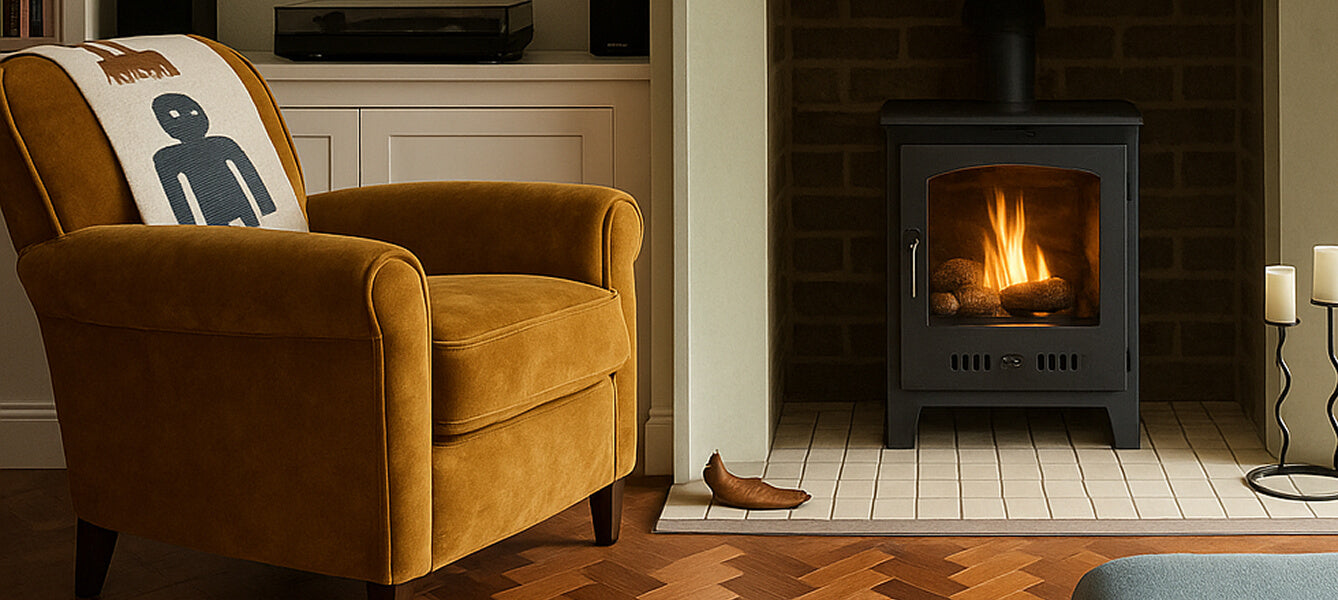Short answers are always nice, aren’t they? Do you need a flue or chimney with a bioethanol fireplace?
No.
Therefore, one of the most significant benefits of bioethanol fireplaces is their versatility.
You’re no longer constrained to gas or electric fires if you don’t have a chimney. And you can use a beautiful bioethanol fireplace anywhere - a house, a flat, a home office, a garage - basically, wherever you want to enjoy a cosy, warming flame.
And it won’t cost you a fortune to install your biofire.
In fact, installation is as simple as unpacking your biofire, placing it in your desired spot, and lighting it. Warm and cosy in less than an hour.
Why don’t biofires need a flue or chimney?
It sounds crazy, doesn’t it? A real flame and no flue or chimney. But it’s true.
Burning wood and coal produces smoke, soot, ash, and a LOT of mess. And wood and coal burning are heavily associated with air pollution in urban areas.
On the other hand, bioethanol fuel burns cleanly without polluting the air inside or outside of your home. And this means you don’t need a flue or chimney with a bioethanol fireplace — better for the environment and better for you.
Can I get a false flue for my bioethanol fireplace?
Yes. We sell false flues that magnetically connect to the top of your biofire. The upper end of the flue curves to a right angle, making it look like your flue connects to the outside.
Of course, there’s no need for a flue with a biofire — but if you want that traditional woodburner look, complete it with a beautiful false flue.
What happens when you burn bioethanol?
Bioethanol needs oxygen to combust, so it burns some of the oxygen in the room. This is why we recommend ensuring your room is ventilated — keep your internal door open to ensure airflow, or open a window every couple of hours if it’s feeling stuffy.
While it sounds a bit worrying that your fire uses oxygen in the room, it’s precisely the same with any fire: wood, coal, or bioethanol — they all produce flames that use up oxygen from the room.
What emissions do you get from burning bioethanol?
We all know that wood and coal produce smoke, soot, and ash. These flames also send out tiny carcinogenic particles into the air, which can be health hazards, especially if you’re prone to respiratory problems.
However, the only emissions from burning bioethanol are:
- Carbon dioxide — about the same amount as burning two candles
- Water vapour — but you won’t notice it in the room.
That’s it. Just a little carbon dioxide and water vapour.
This makes bioethanol much safer and better for the environmentthan fossil fuels.
And your house plants will love it — they’ll absorb the carbon dioxide produced by your biofire and thrive!
